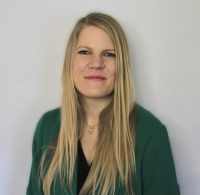The Ice Fjord in Ilulissat.
Exploring the Greenland Ice Sheet with the University of Washington
Sep 27, 2023
On August 28th I traveled from Copenhagen, Denmark to Kangerlussuaq, Greenland and from there to Ilulissat where I spent the rest of the work week following two University of Washington (UW) study abroad programs sponsored by Scan Design Foundation (SDF):
- College of the Environment: SDF Greenland Exploration Seminar (for undergraduate students)
- College of Built Environments (UWCBE): Denmark Travel Study Program (for graduate students in Urban Planning and Landscape Architecture)
Sixteen undergraduate students participated in the Greenland Exploration Seminar, which is expertly led by Dr. Michelle Koutnik. Michelle is an Associate Research Professor at the University of Washington, College of the Environment. Her research interests as a glaciologist include the dynamics of glacier change and the evolution of glaciers and ice sheets over time. In addition, Michelle is part of the UW Department of Earth and Space Sciences’ glaciology group, where she studies how glaciers and ice sheets evolve in response to climate change. The College of Built Environment’s Master Studio and Denmark Travel Study Program sponsored by SDF is led by Professor Emeritus Nancy Rottle. Nancy is the Director and Founder of the Green Futures Lab at UW. Her research has focused on how to develop urban green infrastructure to mitigate climate change.
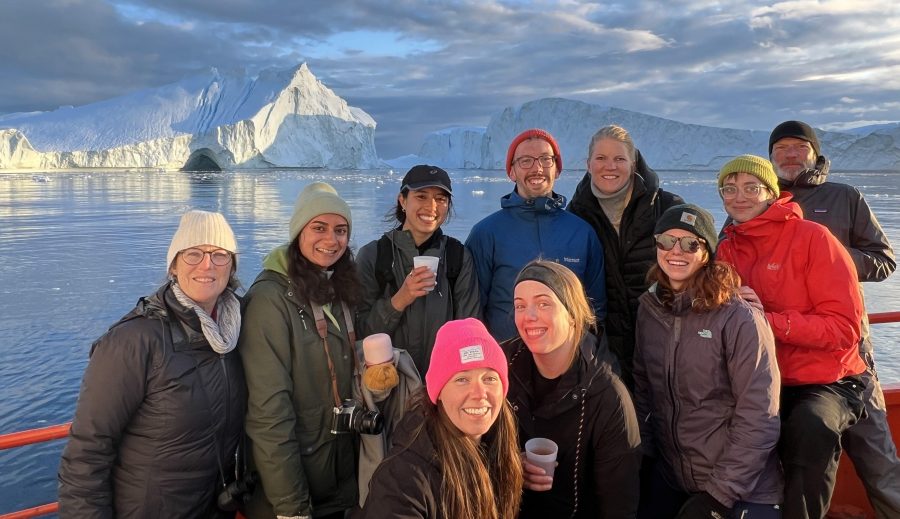
Unique to this year, Michelle Koutnik and Nancy Rottle decided to collaborate. They overlapped their cohorts and some of their tours to offer the UW Urban Planning and Landscape Architecture students an optional additional week in Greenland. Six graduate students and one teacher assistant from UWCBE joined the UW College of Environment group in Ilulissat. A major attraction for the group was Dorte Mandrup’s new Icefjord Centre. The opportunity allowed the UWCBE design students to gain a deeper understanding of the environmental and cultural impacts of climate change in Arctic regions.
Boat Tour, the Oqaatsut Settlement, Whales, and Icebergs
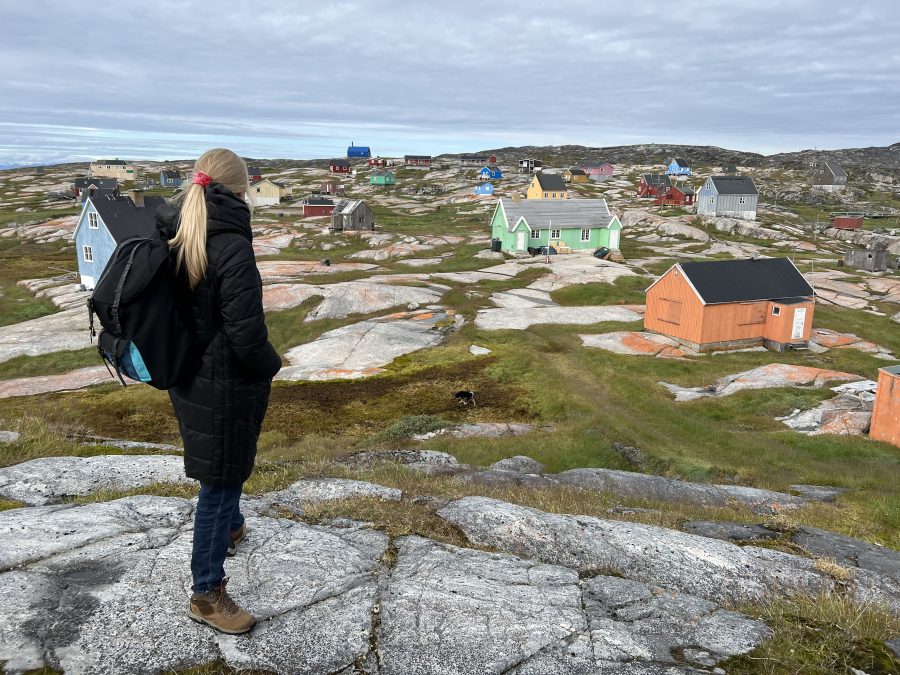
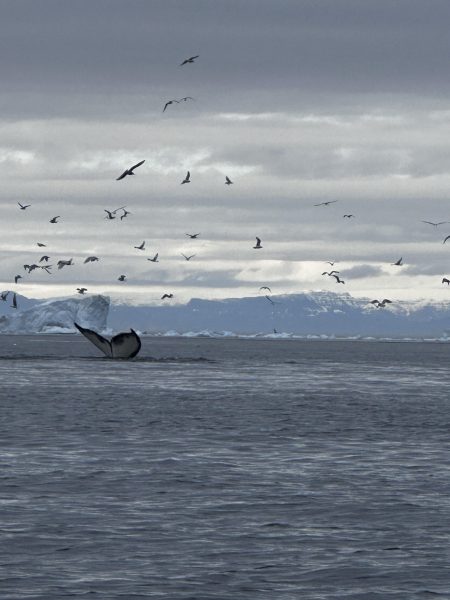
The first activity I participated in when I arrived in Greenland was the boat tour to the settlement called Oqaatsut (pictured above), about an hour North by boat from Ilulissat. Students had the unique experience of being in a country where the ocean is used as a highway and as a main route between cities. And this was the first time the students had seen a carless village. 35 residents live in the settlement, 6 of which are children. Residents retrieve water at a station in buckets or tubs for personal use. We discussed how you would suddenly become very aware of how much water you are using if you had to walk back and forth with containers of water for your own supply. There also were no flushing toilets – the toilets were bags that were emptied at sea by a sanitation worker.
On the boat we passed through stunning icebergs. Ilulissat means Icebergs in Greenlandic. One striking fact our boat tour guide shared with us was that if Greenland melted, the sea level would rise 6 meters worldwide. On our way back to Ilulissat we saw over 20 whales. The number of whales sighted in Disko Bay this year was much higher than average.
University of Washington Program Lectures and Student Presentations
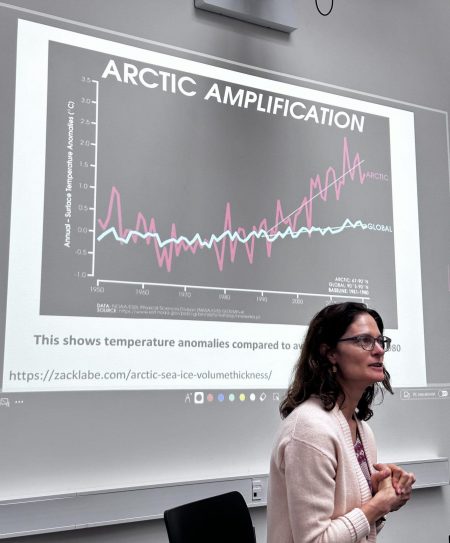
A block of lectures and student presentations was arranged one morning with a well-organized agenda. I was impressed by both the program leaders and the students in each program. Michelle Koutnik (pictured) was accompanied on the trip by two co-instructors, Dr. Michaela King, a research scientist at the UW Applied Physics Lab, and Chase Puentes, a graduate student in Geography.
Michelle, Michaela, and Chase shared interesting presentations on their science and research work in the Arctic. The focus of Michaela’s research is quantifying the amount of ice coming off Greenland. She demonstrated the software she uses called Q Greenland, which displays several layers of data about the Greenland Ice Sheet.
One data set that stood out to me was the study of how people react to learning about climate change. In the U.S. 70% of people want to know more about climate change, and this number is higher globally. A point Michelle and Michaela underscored was the importance of effectively communicating the science to the public. In communication, it is necessary to get a message across that is tangible and appealing, rather than doom and gloom scenarios often seen in media.
Michelle used graphs to show how temperatures are increasing around the world, and highlighted how this is amplified in the Arctic. The sea ice extent is decreasing rapidly, and the temperatures are increasing at a much faster rate than the rest of the world.
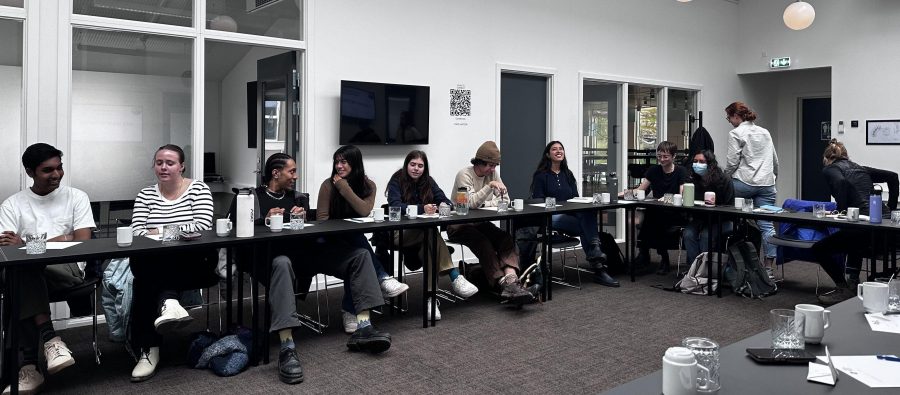
The UWCBE students’ project assignment was to present their depictions of representing change. I was blown away by the creativity in their projects, especially given they had only been in Greenland for a few days. To summarize, they talked about the seen and the unseen, that is, what is evident in climate change versus what is hidden in a layer that is hard capture. One group scrutinized google earth photos of the Ice Sheet, another group did a time lapse of an ice core sample melting, and a third group used graphics to depict changes in the ice sheet. The UWCBE students were largely interested in designing for the climate and development that responds to climate change. Most of the students have environmental science backgrounds. Many were especially interested to see the effects of climate change captured in ice sheets and in mud.
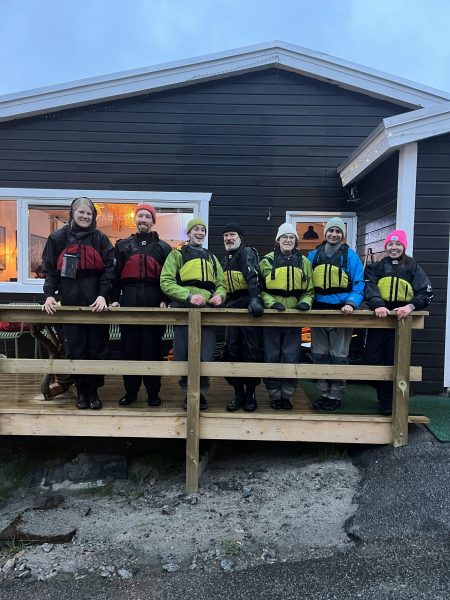
The UW College of the Environment students were from a variety of disciplines, but each student connected their major to the study of the environment. Some students had done work in isotope labs, and some were interested in the study of ice fractures. Their majors included geology, biology, climate science, oceanography, and interesting degree combinations such as Danish and ecology, indigenous community studies and environment, and economics with a focus on the environment. This demonstrates how environmental sustainability can be approached from a variety of different angles.
After their time in Greenland, both groups traveled to Copenhagen. An additional seven UWCBE graduate students joined the cohort. During the first week in Copenhagen, the two groups overlapped for some climate-mitigation focused lectures/tours for the students to better understand how Denmark is pushing its climate goals to move towards climate neutrality and which initiatives and policies the country is undertaking to achieve these goals. Our UW Program leaders also arranged for a boat tour to an off-shore windmill near Copenhagen.
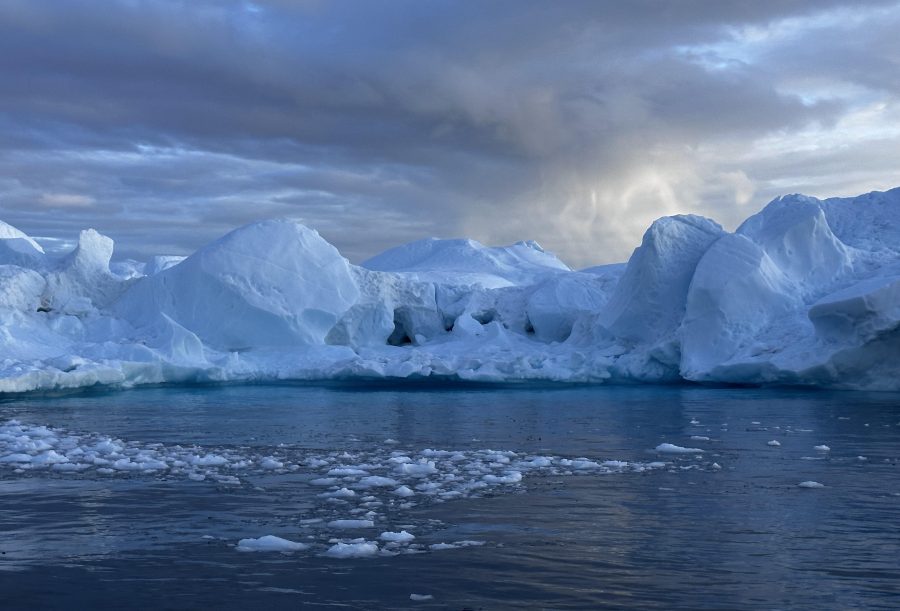
Statements from College of the Environment undergraduate students about Greenland ice loss:
The Greenland ice sheet has gone through periods of natural melting and growing throughout history, which can be seen through both ice and sediment cores. However, the pace at which the melting is happening today is unprecedented.
The rate of Greenland ice-sheet melt has been accelerating over the past few decades due to climate change. Warmer temperatures are causing ice to melt and flow into the ocean.
As ice melts and dark land and water is exposed there is a positive feedback loop causing the earth to absorb more solar energy further increasing temperatures.
Actions can still be undertaken to curb the amount of ice loss occurring but global sea level rise and increases in temperature still need to be considered and prepared for in coordination across the globe.
The Icefjord Centre
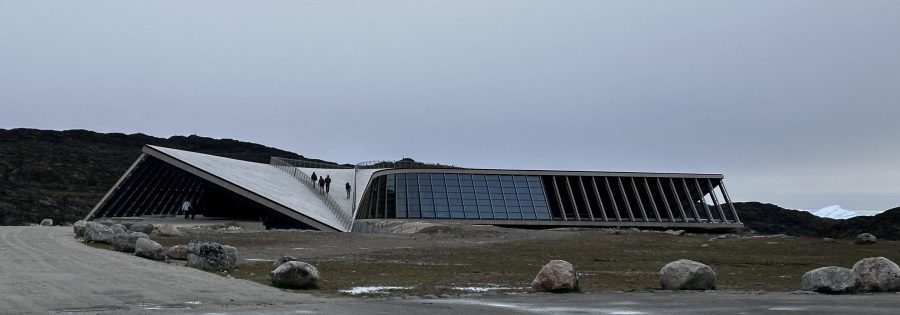
The Icefjord Centre (pictured above) was designed by Danish architect, Dorte Mandrup. All the students in both programs visited the Centre, some visited several times. The spectacular building delves into Inuit culture as well as climate science. The Centre is complete with stories from locals in Ilulissat, VR experiences that bring visitors to climate research centers on the Greenlandic ice sheet, a short film on the life of ice, and so much more. The students were enthralled with the building and its contents.
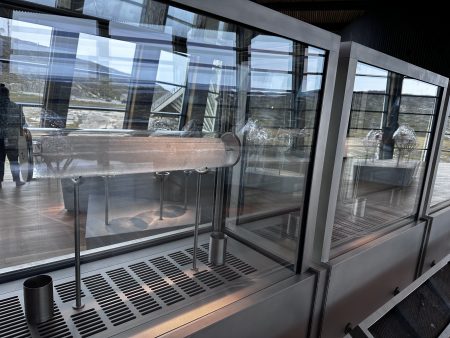
The six ice cores exhibited in the Centre (pictured left) are 450 years old and drilled at a depth of 200 meters at the East Greenland Ice Core Project (EGRIP). Ice Core samples from the Greenlandic Ice Sheet can capture over 40,000 years of history. The ice sheet is made of compressed snow where air between snowflakes becomes trapped as bubbles in the ice. Each bubble contains atmospheric air from the past. The levels of greenhouse gases can be measured in the bubbles, giving insight into changes in the climate through time. The changes in the atmosphere that have resulted from industrialization are evident in these ice core measurements and are of great importance in the current climate debate. The Centre showed how the ice cores are extracted at the GRIP camps. Program leader, Michelle Koutnik, has worked in one of the GRIP bases as a researcher.
Reflections
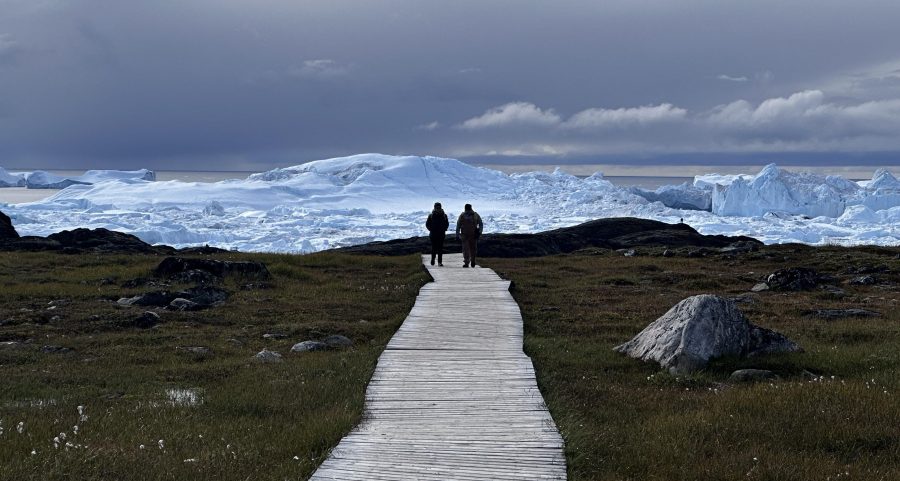
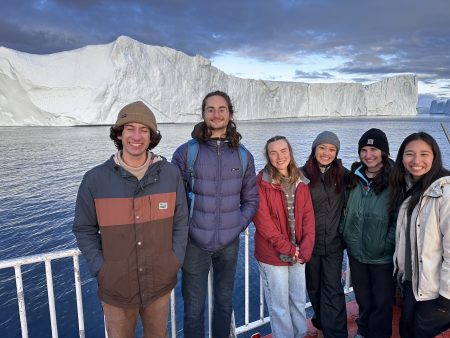
A topic that emerged during the student presentations is the notion of the “seen” and the “unseen”. As I reflect on my experiences in Greenland shadowing the SDF-sponsored UW programs, this theme seems to resonate. The seen versus the unseen surfaced during our discussions about the effects of climate change, i.e., what humans see at the surface or in everyday life, versus what is evident underneath the surface, or the ‘unseen’. The unseen is a hidden stored layer that is hard to capture. The UW programs bring students to Greenland allowing what was previously unseen to them to suddenly be seen. These study abroad programs put the students on the frontlines of climate change in Greenland - one of the most important places for climate research.
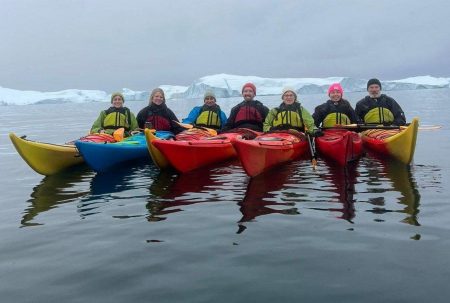
Looking at the immediate impact of these programs, the biggest effect that can be seen is on the students’ personal development and the perspectives gained. What is evident is the enormous value in seeing the Ice Fjord in person and being in a place where climate is changing the fastest. The students had an opportunity to engage with locals and immerse themselves in a place like Greenland that is seeing such rapid changes.
The students talked about feeling both a great joy in experiencing Greenland but also a sadness. They felt privileged to be in the program, and therefore also compelled to bring back the knowledge they gained and share their experiences at home. I felt this joy/sadness paradox in several ways in Greenland. There is a joy in experiencing and hearing about the Inuit culture, but also a sadness for what was lost to colonialism. There too was a joy in experiencing the Ice Fjords and the breathtaking nature, but a sadness that ice sheet is diminishing, and the icebergs are shrinking. The students in these programs become advocates using what they have seen, and many continue on their own research paths.
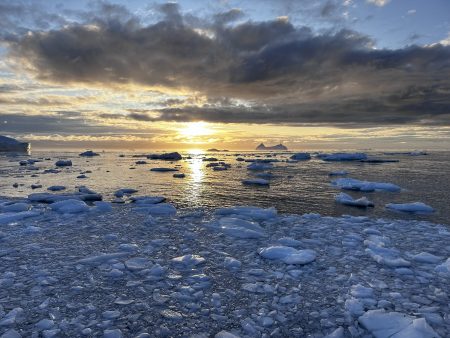
A final reflection I had was how the climate crisis must be tackled in a concerted effort globally - but also, from many different angles. The students I met in these UW programs in Greenland were examples of this. They came from various disciplines but with a similar interest in the climate. For example, a business student interested in sustainable business models or as the economics student from Michelle’s group who was interested in how countries can get closer to their climate goals by utilizing economy-driven tactics. The landscape architecture and urban planning students were tackling climate issues from yet another perspective. Environmental sustainability can be approached from different fields – and it should be.
With their focus on environmental sustainability and cross-cultural exchange, both UW programs speak the core of Scan Design Foundation’s mission. And bringing students and researchers to Greenland gives them a real-time view from the forefront of the climate crisis.

